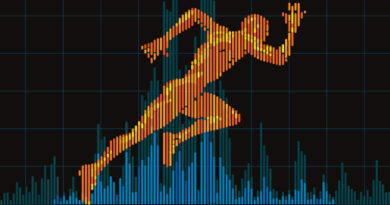Process Improvement Column: Homebuyer Affordability Declined In March
Homebuyer affordability declined in March, with the national median payment applied for by applicants rising 5.0 percent to $1,736 from $1,653 in February. This is according to the Mortgage Bankers Association’s (MBA) new Purchase Applications Payment Index (PAPI), which measures how new monthly mortgage payments vary across time – relative to income – using data from MBA’s Weekly Applications Survey (WAS).
“The start of the spring homebuying season is off to a mixed start. The healthy labor market and robust wage gains fueled demand throughout the country in March, but rapid home-price growth and the 42-basis-point surge in mortgage rates last month slowed purchase application activity. A typical borrower’s principal and interest payment was $387 more than in March 2021,” said Edward Seiler, MBA’s Associate Vice President, Housing Economics, and Executive Director, Research Institute for Housing America. “Swift price-appreciation, sky-high inflation, low inventory, and mortgage rates now two percentage points higher than last year are all headwinds for the housing market in the coming months – especially for first-time buyers.”
Added Seiler, “MBA’s updated forecast calls for an annual decline in existing sales, higher home prices and mortgage rates, and a smaller, but solid 4 percent gain in purchase origination volume.”
An increase in MBA’s PAPI – indicative of declining borrower affordability conditions – means that the mortgage payment to income ratio (PIR) is higher due to increasing application loan amounts, rising mortgage rates, or a decrease in earnings. A decrease in the PAPI – indicative of improving borrower affordability conditions – occurs when loan application amounts decrease, mortgage rates decrease, or earnings increase.
The national PAPI (Figure 1) increased 5.0 percent to 150.9 in March from 143.7 in February, meaning payments on new mortgages take up a larger share of a typical person’s income. Compared to March 2021 (122.9), the index jumped 22.8 percent. For borrowers applying for lower-payment mortgages (the 25th percentile), the national mortgage payment increased 3.2 percent to $1,129 from $1,094 in February.

MBA’s national mortgage payment to rent ratio (MPRR) increased to 1.38 in March (highest since 2010) from 1.32 in February, 1.22 in January, and 1.15 in December 2021, meaning mortgage payments for home purchases have increased relative to rents. The national median asking rent in first-quarter 2022 increased 4.0 percent on a quarterly basis to $1,255. The 25th percentile mortgage application payment to median asking rent ratio was 0.90 in March, up from 0.87 in February and 0.74 in December 2021.
Additional Key Findings of MBA’s Purchase Applications Payment Index (PAPI) – March 2022
- The national median mortgage payment applied for by applicants was $1,736 in March, up from $1,653 in February, $1,526 in January, and $1,349 in March 2021.
- The national median mortgage payment for FHA loan applicants was $1,254 in March, up from $1,201 in February and $1,018 in March 2021.
- The national median mortgage payment for conventional loan applicants was $1,819 in March, up from $1,750 in February and $1,424 in March 2021.
- The top five states with the highest PAPI were: Idaho (241.2), Nevada (223.9), Arizona (200.7), California (192.5), and Utah (190.9).
- The top five states with the lowest PAPI were: Washington, D.C. (89.1), Alaska (98.1), Connecticut (98.4), West Virginia (106.8), and Louisiana (107.1).
- Homebuyer affordability decreased for Black households, with the national PAPI increasing from 146.5 in February to 153.8 in March.
- Homebuyer affordability decreased for Hispanic households, with the national PAPI increasing from 137.5 in February to 144.4 in March.
- Homebuyer affordability decreased for White households, with the national PAPI increasing from 144.4 in February to 151.6 in March.

Tony Garritano is the founder at PROGRESS in Lending Association. As a speaker Tony has worked hard to inform executives about how technology should be a tool used to further business objectives. For over 20 years he has worked as a journalist, researcher and speaker in the mortgage technology space. Starting PROGRESS in Lending Association was the next step for someone like Tony, who has dedicated his entire career to providing mortgage executives with the information that they need to make informed technology decisions to help their businesses succeed.



